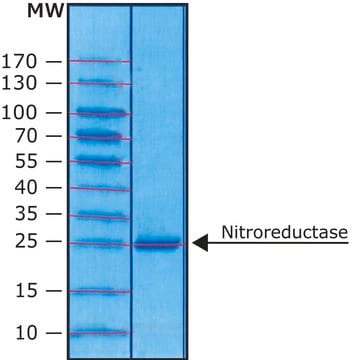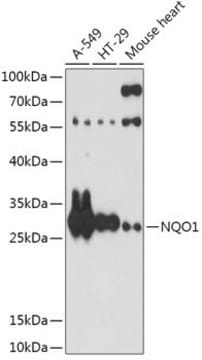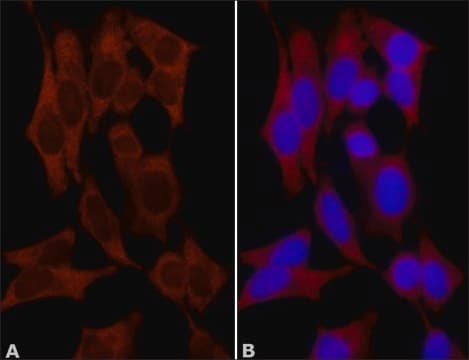SRP6539
NQO1 human
recombinant, expressed in E. coli, ≥90% (SDS-PAGE)
Synonim(y):
Azoreductase, DT-Diaphorase (DTD), Dioxin-inducible 1, Disphorase-4 (DIA4), Menadione Reductase, NAD(P)H Dehydrogenase (Quinine) 1 (NQO1), NAD(P)H Quinone Oxireductase, Phylloquinone Reductase, Quinone Oxidoreductase 1, Quinone Reductase 1 (QR1)
Wybierz wielkość
2210,00 zł
Wybierz wielkość
About This Item
2210,00 zł
Polecane produkty
pochodzenie biologiczne
human
rekombinowane
expressed in E. coli
Próba
≥90% (SDS-PAGE)
Formularz
liquid
masa cząsteczkowa
~30 kDa (Human NQO1 aa 1-274 is fused at the C-terminus to a His-tag.)
opakowanie
pkg of 10 and 50 μg
zanieczyszczenia
<0.1 EU/μg endotoxin (LAL test)
numer dostępu UniProt
Warunki transportu
wet ice
temp. przechowywania
−20°C
informacje o genach
human ... NQO1(1728)
Opis ogólny
Działania biochem./fizjol.
Postać fizyczna
Hasło ostrzegawcze
Warning
Zwroty wskazujące rodzaj zagrożenia
Zwroty wskazujące środki ostrożności
Klasyfikacja zagrożeń
Eye Irrit. 2
Kod klasy składowania
10 - Combustible liquids
Klasa zagrożenia wodnego (WGK)
WGK 1
Temperatura zapłonu (°F)
Not applicable
Temperatura zapłonu (°C)
Not applicable
Wybierz jedną z najnowszych wersji:
Certyfikaty analizy (CoA)
Nie widzisz odpowiedniej wersji?
Jeśli potrzebujesz konkretnej wersji, możesz wyszukać konkretny certyfikat według numeru partii lub serii.
Masz już ten produkt?
Dokumenty związane z niedawno zakupionymi produktami zostały zamieszczone w Bibliotece dokumentów.
Active Filters
Nasz zespół naukowców ma doświadczenie we wszystkich obszarach badań, w tym w naukach przyrodniczych, materiałoznawstwie, syntezie chemicznej, chromatografii, analityce i wielu innych dziedzinach.
Skontaktuj się z zespołem ds. pomocy technicznej




![Nitrate Reductase (NAD[P]H) from Aspergillus niger lyophilized powder, ≥300 units/g solid](/deepweb/assets/sigmaaldrich/product/images/309/282/2a67ae4d-ca55-4f0b-96ec-34748ff8a21e/640/2a67ae4d-ca55-4f0b-96ec-34748ff8a21e.jpg)




